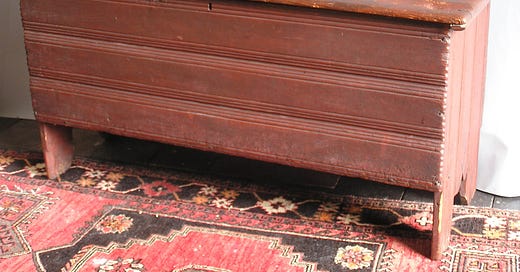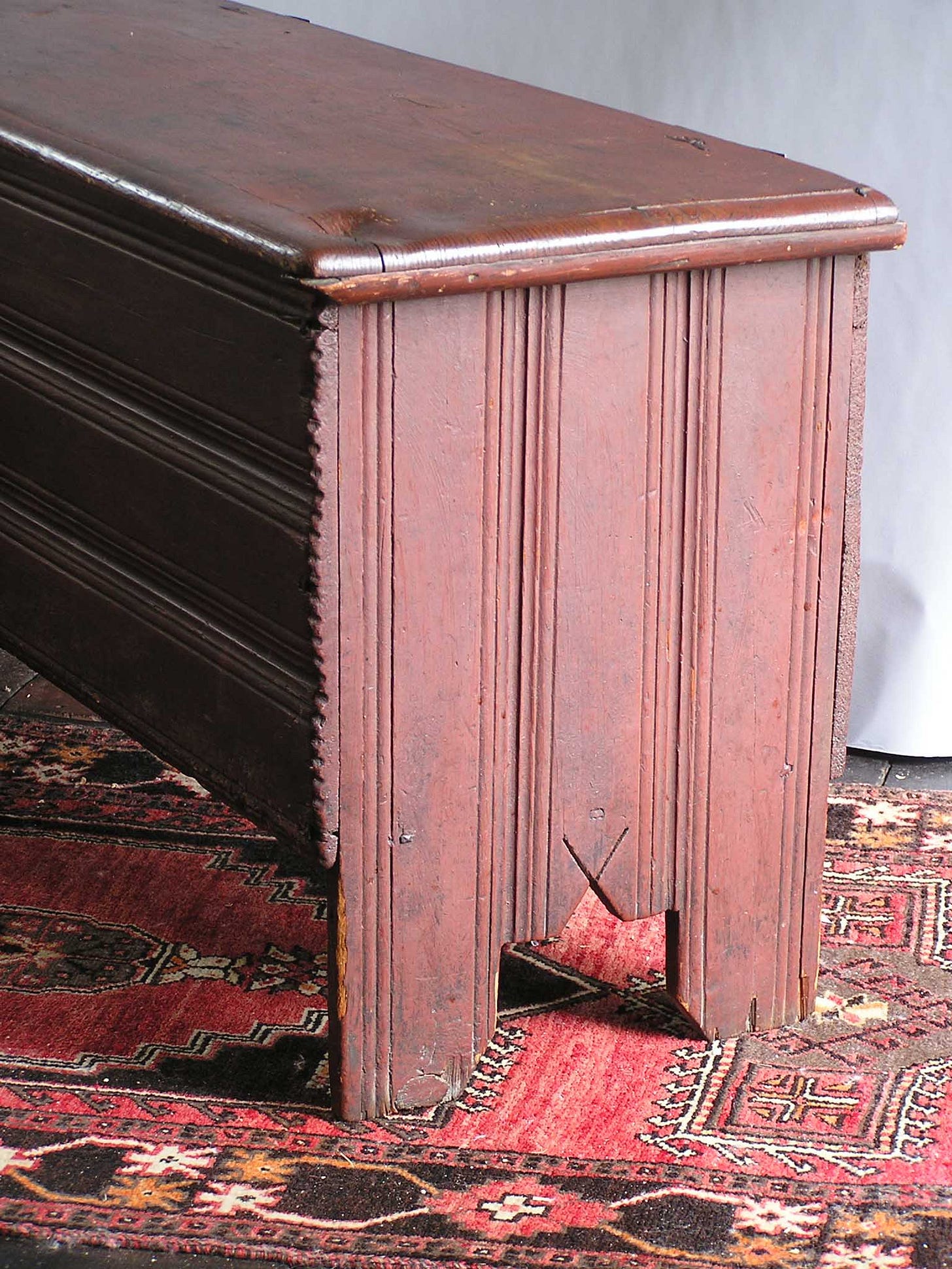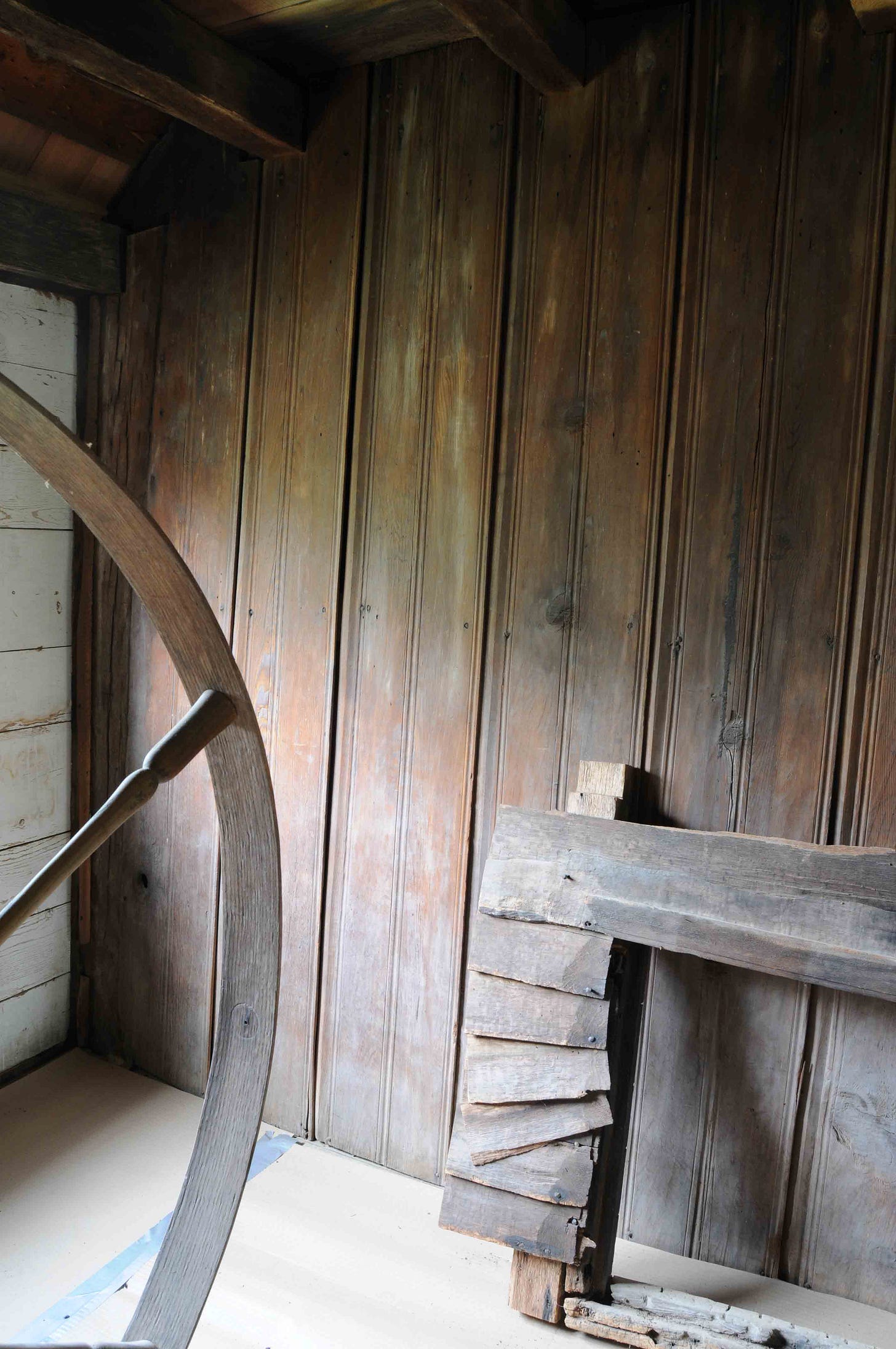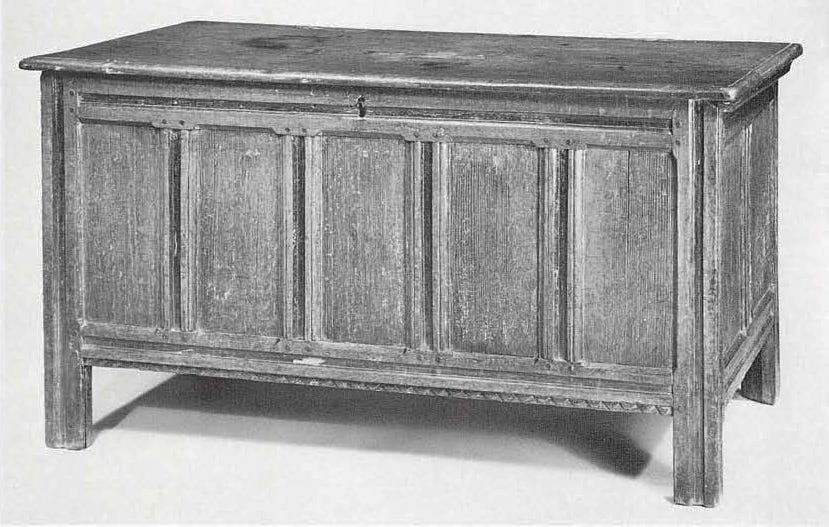I’m clearly inclined toward the very decorative style common in the 17th century - I often joke that I’ve infected myself with Horror Vacui - fear of a blank space. A reader recently asked if there even was a “plain” style and the answer is yes. First of all - plain in this case is a relative term. Considering the amount of decoration common in 17th century work, what I would call plain might still be pretty decorative to some eyes. The written records include lots of furniture that we’d call basic/plain/functional - usually indicated more by the low value than by any description - but tying terms to surviving artifacts is a tricky endeavor. I’ll skip it for now and just show some “plain-er” pieces from that period.
First caveat is maybe less of that survives or that which does is harder to identify as to time and place. The most common examples are board chests as opposed to joined (frame and panel) chests.
We often now call these 6-board chests, the premise being that you cut the plank up into 6 boards - front, back, ends/sides, top & bottom. Then cut a few rabbets and nail the thing together. On the ends, there’s a cutout to form feet, often decorative.
In England they’re usually pitsawn oak. In New England they’re usually mill-sawn pine. Often the pine examples have moldings cut along the boards’ faces (like the chest above) - and this technique/decoration appears in wall sheathing also. So yes, even the plain stuff is decorated. Here’s some typical paneling that Bob Trent showed me at the “Old House” in Cutchogue, Long Island, c. 1690s.
There are joined chests that I consider plain, comparatively speaking. A couple of them are from Plymouth Colony/County. One distinction is the number of panels across the fronts - 5 of them. Stopped chamfers on the framing around these panels, plowed moldings along the midst of the framing parts - rails, stiles and muntins. And the zig-zag sawtooth decoration cut along the bottom rail on one of them. So in some sense, far from plain - but with all that blank wood it’s unlike a lot of period joined chests.
Keep reading with a 7-day free trial
Subscribe to Follansbee's Substack to keep reading this post and get 7 days of free access to the full post archives.







